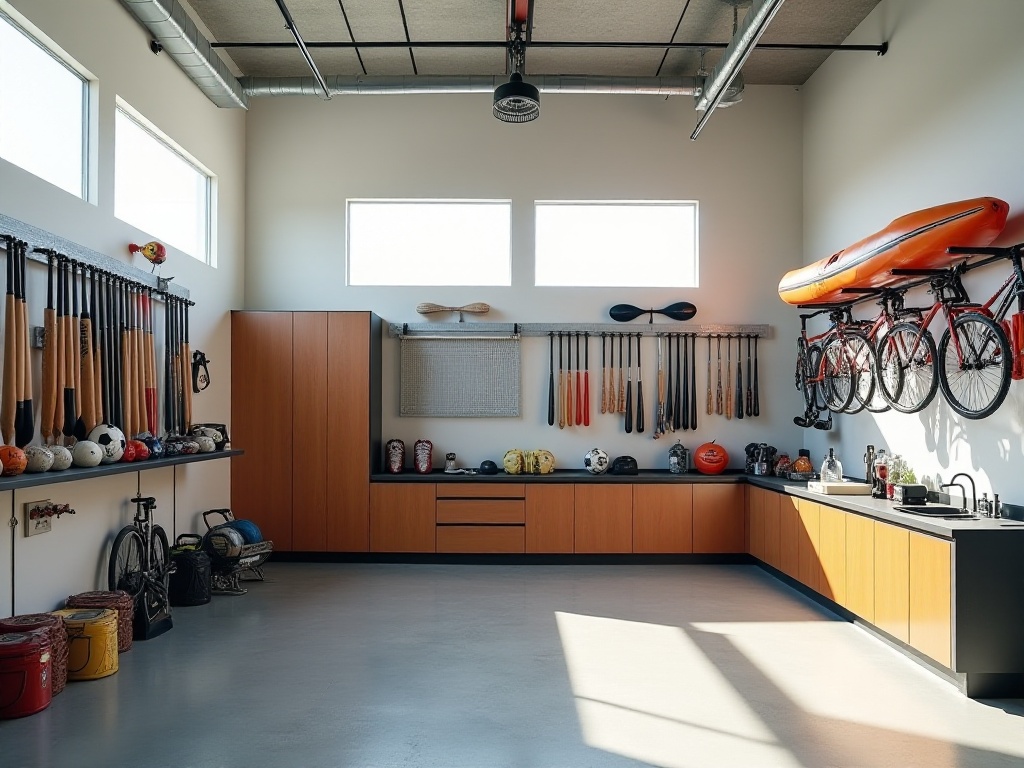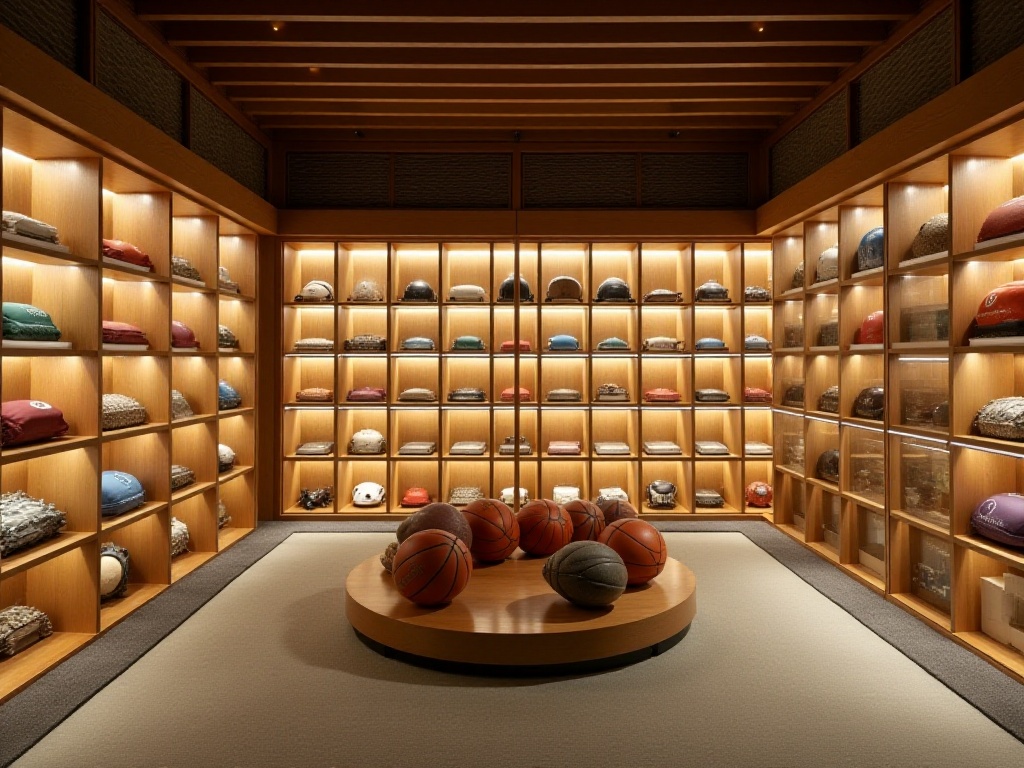I recently bought some new sports equipment. Looking at these new purchases alongside my existing gear at home, I suddenly found myself deeply troubled. Just now, returning from the gym, I carelessly tossed my gym bag in the entryway, my yoga mat leaned against the wall, resistance bands tangled like a twisted pastry, and dumbbells scattered across the floor... Goodness, this is hardly the room a young person who loves life should have!
After some brainstorming and practical experimentation, I finally found a storage solution that works for me, and it's truly super practical! Today I'll share my personal experience, hoping to help fellow fitness enthusiasts who struggle with storage like I did.
When it comes to storage, I've got plenty to say. I remember when I first started working out, I basically shoved all my equipment under the bed. As I acquired more gear, there wasn't enough space under the bed, so they ended up piled in corners. Finding anything was like going on a treasure hunt, turning everything upside down. Then one day, inspiration struck as I looked at the empty walls: why not utilize this vertical space?
I immediately ordered a wall storage system online. Though installation took half a day, the results were amazing. I chose a modular hook system including various sizes of hooks, shelves, and storage baskets. The biggest advantage of this system is its flexibility - you can choose suitable attachments based on different equipment sizes and weights.
For sports balls like basketballs and soccer balls, I use specialized ball racks that hold them securely without risk of rolling off. Tennis and badminton rackets hang on dedicated hooks vertically, saving space while preventing warping. For yoga mats, I use an L-shaped bracket - they look neat rolled up there and it's practical too.
My proudest addition is a full-length mirror next to the wall storage system. Not only can I check my exercise form, but the mirror makes the whole wall look more open and makes the room appear more spacious. I've noticed that when sunlight comes in, the mirror's reflection makes my sports equipment gleam beautifully, giving everything a quality appearance.
Many friends who visit praise this "sports wall." Some say the design is creative, others say just looking at the wall motivates them to exercise. Indeed, seeing neatly arranged sports equipment every day naturally makes you want to work out!
However, I should remind everyone of several important points when installing a wall storage system: first, choose a wall with sufficient load-bearing capacity, preferably a solid wall; second, install at an appropriate height - not too high to reach or too low to look good; finally, leave adequate spacing for easy access to equipment.

When it comes to storing small sports items, I've developed quite a specialized system. I remember when I first started working out, I would just throw all the small items into drawers, and finding a wrist guard meant turning everything upside down. Now? Open a drawer and everything lies neatly in its own "nest," easily visible at a glance.
Here's my drawer organization system: First, I divided the drawer into several main zones. The protection zone holds wrist guards, knee pads, and ankle supports. To prevent these items from tangling, I gave each pair of protective gear its own mesh storage bag, which maintains shape while allowing airflow.
The accessories zone holds various small items like headbands, hair ties, and sweatbands. These small things are the easiest to lose, so I bought a compartmentalized storage box with labeled sections, making it impossible to misplace anything.
The sock zone might be my proudest design. I categorized sports socks by activity type: running socks, basketball socks, tennis socks, etc. Each pair is rolled and stored vertically, arranged like dominoes. This not only looks neat but makes grabbing them very convenient.
There's also a separate zone for consumables like athletic tape, band-aids, and anti-chafing patches. I keep extra stock of these frequently used items, so I can immediately replace them when one runs out.
Recently, I added a "to wash" zone specifically for small items that need cleaning. This prevents mixing dirty and clean items while reminding me to wash them promptly.

As a sports enthusiast, I visit different venues almost every weekend. Sometimes it's the gym, sometimes courts for ball games, sometimes swimming... so car storage is absolutely essential for me.
After multiple trials and improvements, here's my current car storage solution: I keep two collapsible storage boxes in the trunk, sized perfectly to maximize trunk space. One box is dedicated to ball sports equipment like basketballs, soccer balls, and tennis rackets. The other box holds change of clothes, towels, and toiletries.
I chose waterproof storage boxes with lids. This completely protects the equipment from rain. Plus, these storage boxes fold up when not needed, taking minimal space in a corner.
To prevent equipment from bouncing around inside the boxes, I added dividers. This protects the gear during turns or sudden brakes. It's especially important for items sensitive to impact, like tennis rackets, which are much safer with divider protection.
Besides storage boxes, I installed hooks on both sides of the trunk for frequently used items like water bottles and towels. This makes them easily accessible without opening the storage boxes.
Most importantly, I put dehumidifier packets in each storage box. This is crucial because sports equipment often gets sweaty, and without proper moisture control, it can easily develop mold. I replace the dehumidifier packets every two weeks to ensure equipment stays in a dry environment.
When it comes to sports equipment hassles, besides storage issues, odor is the most headache-inducing problem, especially for protective gear that's worn against the skin. I was troubled by this for a long time, trying various deodorizing sprays with disappointing results.
Then by chance, I discovered two highly effective deodorizing methods. The first is the freezer method, which might sound bizarre. The specific process is: put the smelly protective gear in a sealed bag, then place it in the freezer for 6-8 hours.
This method works by using low temperatures to kill odor-causing bacteria. I was skeptical at first but was amazed by the results. The biggest advantage is that it requires no chemical additives and doesn't damage the equipment.
The second method is sun exposure. Take advantage of sunny days by putting equipment out on the balcony. The sun's ultraviolet rays not only kill germs but also keep equipment dry. However, avoid intense sunlight - it's best to choose times before 10 AM or after 4 PM to prevent overheating.
Besides these two methods, I've developed a good habit: airing out protective gear after each use instead of putting it directly in the bag. Sealed environments easily breed bacteria, leading to odors. If there's no time to air things out, at least take the protective gear out of the bag and place it somewhere ventilated.

Equipment maintenance is truly a science. Different equipment needs different maintenance methods - proper care not only extends lifespan but maintains optimal performance.
Let's start with ball maintenance. Take basketball for example - many people might think it's just a ball, no big deal. Actually, basketball maintenance requires attention to detail. First is air pressure, which should be between 7-9 PSI. Too much pressure affects feel, too little affects bounce. I check pressure weekly with a gauge to ensure it's in the optimal range.
Surface cleaning is also important. Wipe the ball with a dry towel after each use to remove dust and sweat. If there's visible dirt, you can wipe it with warm water, but dry it immediately - don't let water remain on the surface.
Soccer ball maintenance is similar to basketball, but requires slightly lower pressure, generally between 0.6-1.1 atmospheres. Soccer balls need extra water protection since they're often used outdoors. I regularly apply leather conditioner to prevent cracking.
For tennis rackets, maintaining proper string tension is crucial. If hits feel too soft, it's time to restring. Generally, amateur players should restring every six months. Rackets must be kept dry, as humid environments affect performance.
Protective gear maintenance might be most tedious because it directly contacts skin, making hygiene especially important. I recommend wiping with sanitizing wipes after each use, especially in sweaty areas. For removable protective gear, regular disassembly and washing is best.
Most importantly, regularly check all equipment for damage. Check if Velcro still sticks, if racket grips are tight enough, if shoe soles are overly worn, etc. Address problems promptly - don't wait until equipment is completely damaged to replace it.
After such long exploration and practice, I deeply understand: storage and maintenance are about building habits. It might seem troublesome at first, but stick with it and you'll find these small habits not only make your sports equipment more durable but make your athletic life more enjoyable.
Moreover, a neat and orderly sports space really motivates exercise. Seeing well-organized sports equipment naturally makes you want to work out. This might be what they call "environment-driven behavior"!
After sharing all this, do you have your own storage secrets? Or unique tricks for maintaining equipment? Welcome to share and discuss in the comments! Through sharing our experiences, I believe we can all find the storage and maintenance methods that work best for us.
 Previous
Previous